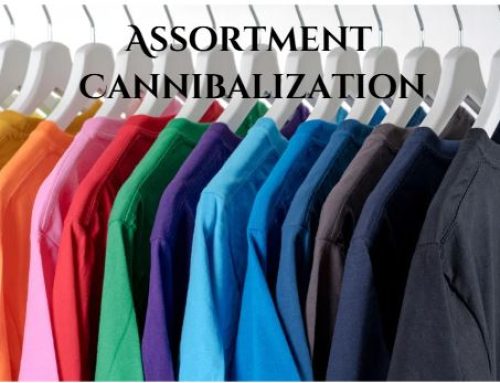From Strategy to Execution: Why Merchandise Planning ≠ Assortment Planning
Introduction
In the world of retail planning, terms like assortment planning and merchandise financial planning are often used interchangeably. But they’re not the same — and confusing the two can create serious issues across your organization.
When retailers blur the line between Merchandise Financial planning (forecasting) or OTB, and assortment execution, they risk misalignment between strategy and execution, poor inventory management, product cannibalization, and missed sales opportunities.
In this post, we’ll clarify why these two applications serve different purposes — and how daVinci Retail’s integrated solution helps retailers connect the dots from strategy to execution with the power of retail analytics.
A Personal Perspective: When “One Tool Fits All” Doesn’t Work
When I first started in retail systems, we had an excellent merchandise planning tool. Leadership often asked:
“Why don’t we take this system that plans from company to class level, push it down to SKU level, and call it assortment planning?”
It sounded logical — but it failed on many levels.
Merchandise Planning is built for planners who think in financial hierarchies and rely heavily on spreadsheets. That’s why most merchandise planning systems look and feel like Excel — they’re designed for forecast planning, OTB management, and top-down financial control.
Assortment Planning, on the other hand, is about breadth, and depth of products. It’s built for buyers who manage style-level details — brand, attributes, images, PDM data, colorways, and trend context — and must make decisions across omni-channel and retail cluster assortments.
That’s why we created daVinci Retail. Our Merchandise Financial Planning (MFP) and Assortment Planning (AP) applications look completely different because they serve two distinct teams — planners and buyers. Yet, when used together, they unify strategy and execution, ensuring your merchant organization delivers on financial goals while staying true to your brand and customer.
1. High-Level Definitions & Roles in the Retail Planning Lifecycle
Merchandise Planning (or Merchandise Financial Planning)
This is your strategic and financial north star. It defines how much to invest by product category, omni channel, and season — balancing sales, margin, and inventory goals.
It’s where forecast planning meets financial discipline, and where planners control how much can be spent via Open-to-Buy (OTB) management.
Merchandise Planning answers:
“How much total inventory ($/units) can I invest — and in which categories, omni channels, and time periods?”
Assortment Planning
This is the tactical execution layer. Within the financial framework, assortment planning determines which styles, colors, and sizes to carry, where (store cluster, and omni-channel), and when.
It’s the bridge between financial targets and customer demand, using data to fine-tune the product mix and prevent cannibalization between overlapping styles.
Assortment Planning answers:
“Given my budget and OTB, which specific items should I buy, in which locations, and in what quantities?”
2. Key Differences Between the Two Applications
|
Dimension |
Merchandise Planning |
Assortment Planning |
|
Purpose / Focus |
Strategic & financial control |
Product mix & execution |
|
Time Horizon |
Long-term (season/year) |
Mid to short term (month/quarter) |
|
Granularity |
Category / channel / time |
Style/color/size / cluster / omni-channel |
|
Decision Types |
Budget allocation, receipts, markdowns |
Style/color selection, depth, localization |
|
Input Data |
Forecasts, history, financial goals |
Style demand, store data, customer insights |
|
Constraints |
Capital limits, OTB |
Vendor minimums, pack sizes, store capacity |
|
Output |
Financial plan, receipts OTB |
SKU-level buy quantities, allocation guidelines |
Because they operate at different levels of concepts, these systems require unique data structures, modeling logic, and retail analytics capabilities — even though they serve the same business goals.
3. Why It Matters: Risks of Blurring the Lines
Retailers that use one tool for both financial and assortment decisions often face three critical issues:
- Mismatch Between Quantity and Mix
You might hit your unit or dollar OTB targets but end up with the wrong product mix — too many of one style, color, or attribute — causing product cannibalization, markdowns, and margin erosion. - Poor Localization and Omni-Channel Balance
Without proper assortment planning by store cluster and omni channel, best-selling items can be underrepresented in certain regions or online, hurting customer satisfaction. - Reduced Agility
Market trends change fast. If your merchandise planning does not include forecasting you will struggle to pivot mid-season, leaving sales on the table, by not adjusting your assortment plan.
4. How daVinci’s Architecture Bridges the Gap
daVinci Retail’s suite is designed to eliminate silos — ensuring forecast planning, OTB control, and assortment execution all work in harmony.
- Merchandise Financial Planning (MFP) sets the strategy, defining the financial roadmap and OTB guardrails.
- Assortment Planning then uses those limits to quantify Styles, localize assortments, and balance omni-channel demand.
- Both share a centralized data model and retail analytics engine, giving planners and buyers a single version of the truth.
- daVinci’s proprietary buy quantification engine calculates optimal buys — answering the million-dollar question: How much should I buy?
This integration ensures retailers move seamlessly from strategy to execution, uniting planners, buyers, and allocators with one connected planning workflow.
5. Best Practices for Aligning Merchandise & Assortment Planning
- Start with unified data. Share product, location, and forecast data between systems.
- Use OTB guardrails. Let MFP define the spend boundaries for buying decisions.
- Leverage retail analytics. Use sell-through, inventory, and trend data to refine both plans mid-season.
- Collaborate iteratively. Let trend feedback inform financial adjustments in real time.
- Tailor by channel. Use clustering and omni-channel insights to optimize the product mix.
- Avoid spreadsheets. Replace manual reconciliation with integrated tools like daVinci’s.
Conclusion
Assortment planning and Merchandise planning are not the same. They solve different problems, serve different teams, and operate at different levels of granularity.
But when connected — with shared forecast planning, OTB, and retail analytics — they drive better decisions, stronger margins, and fewer surprises.
That’s why daVinci Retail built two distinct yet integrated applications: one for the financial planner and one for the merchant, both working together to deliver customer-centric assortments that turn strategy into profitable execution.






















